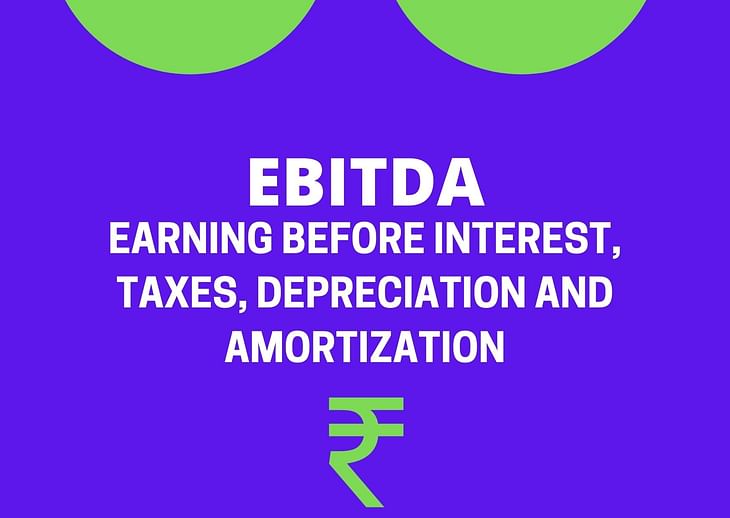What is EBITDA?

EBITDA, or earnings before interest, taxes, depreciation, and amortization is a measure of a company's overall financial performance and is used as an alternative to the net income in some circumstances. It is a measure of profitability.
Amortization refers to spreading payments over multiple periods in case of debt. It also refers to a reduction in the value of intangible assets such as goodwill, a patent, or a copyright.
Depriciation on the other hand refers to the decrease in value of a tangible asset (Car, Bike, Machinery) with time.
How Do I Calculate EBITDA?
EBITDA= Net Income + Interest + Taxes + Depreciation + Amortization
EBITDA = Operating Profit + Depreciation expense + Amortization expense.
Operating Profit = The profit earned from the business operation before the deduction of taxes and payable interest.
Why EBITDA?
EBITDA is to be used to analyze and compare profitability among companies and industries. It eliminates the effects of financing and capital expenditures.
- Financing expenditures are essentially the interest, and other charges involved in the borrowing of money to build or purchase assets.
- Capital expenditures (capex) are funds used by a company to acquire or upgrade physical assets such as property, buildings, or equipment.
The EBITDA metric is commonly used as a proxy for cash flow. It can give an analyst a quick estimate of the value of the company, as well as a valuation range by multiplying it by a valuation multiple obtained from equity research reports, industry transactions, or M&A.
In addition, when a company is not making a profit, investors can turn to EBITDA to evaluate a company. Many private equity firms use this metric because it is very good for comparing similar companies in the same industry. Business owners use it to compare their performance against their competitors.
Drawbacks of EBITDA
Ignores Costs of Assets
Unlike Free Cash Flow (FCF), every company needs a certain amount of money to ensure that its operations continue to run. One such example is when a textile loom buys a machine, it needs to pay for transportation, labour wages, installation and testing of the machine.
Ignores Working Capital
EBITDA also leaves out the cash required to fund working capital (the capital of a business which is used in its day-to-day trading operations) and the replacement of old equipment
Varying Starting Points Make It Unreliable
While subtracting interest payments, tax charges, depreciation, and amortization from earnings may seem simple enough, different companies use different earnings figures as the starting point for EBITDA. In other words, EBITDA is susceptible to the earnings accounting games found on the income statement.
What is EBIT? How is it Different From EBITDA?
EBIT or Earnings before interest and taxes is a measure of a firm's profit that includes all incomes and expenses except interest expenses, income tax expenses, amortization and depreciation.
EBIT = Net Income + Interest Expense + Tax Expense
EBITDA is particularly useful in cases of firms with very heavy capital investments. In these cases, depreciation and amortization can make the company’s operating budget look far less healthy than it actually is, even to the point of showing operating losses despite a steady cash flow.


Post your comment
No comments to display